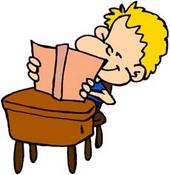Why Singapore’s English Teachers Should Embrace Singlish, Not Fight It
Is it time for Singaporean educators to embrace Singlish as a legitimate learning tool? What the Research […]
Read More
What goes on during reading lessons in our schools? What are the teachers’ beliefs and understanding of the reading process? How do teachers shape the reading practices of their pupils? Our CRPP project team seeks to find answers to these questions and more.

The last major attempt to describe and intervene in the teaching of reading in Singapore was the Reading Skills Project commissioned by the Ministry of Education (MOE) in 1983 and reported by the National Institute of Education (NIE) reading expert Ng Seok Moi in 1987. Many of the more senior teachers may perhaps remember that based on these findings, the Reading and English Acquisition Programme (REAP) was introduced in lower primary classes in 1985. It has been almost two decades since REAP, and there has been no large-scale research since to find out what takes place in reading lessons in our classrooms.
Our students are doing well. The Progress in International Reading Literacy Study (PIRLS) 2001 and Trends in Reading Achievement 1991-2001 reported that, on average, Singapore pupils read better than those in comparable countries where English is not the first language. Adding to this, our pupils who speak English at home are better readers than those in English-speaking countries like Canada and New Zealand. Though these are statistics that we can be rightly proud of, we do not really know what happens in our reading lessons because there has been no empirical research done.
So we set about looking into what goes on in reading lessons in our classrooms, trying to answer the following questions:
Using the “four resources model” conceptualised by Luke and Freebody in 1998, we assembled a coding scheme and began documenting what goes on during the reading lessons, particularly in Primary 3 classrooms in Singapore.
We also wanted to document teachers’ beliefs and understanding of the reading process; and assess which suites of instructional activities appear to lead to reading success. We observed 23 reading lessons in 13 Primary 3 classes from 8 neighbourhood schools.
The findings of the study were shared with the participating schools in October 2004. The longer term goal is to work towards adding value to reading lessons in the in-service teacher training courses from 2005. We will also begin working with MOE and individual schools in developing in-service approaches to reading, basic new diagnostic tools and materials in 2005/2006.
To find out more about this project, please click here.
References
Luke, A. (1994). The social construction of literacy in the classroom. Melbourne: Macmillan.
Luke, A., & Freebody, P. (1998). The social practice of reading. In S. Muspratt, A. Luke, & P. Freebody (Eds.), Constructing critical literacies. Creskill, NJ: Hampton Press.
Ng, S. M. (Ed.). (1987). Research into children’s language and reading development (January 1983-December 1986). Singapore: Institute of Education.